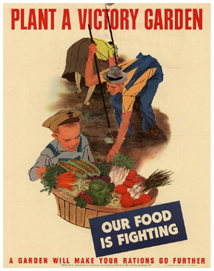
How does an entire free english grammar program sound?
FREE is GREAT!
KISS Grammar is a specific set of grammatical terms and an instructional sequence for teaching students how any word in any English sentence functions to convey meaning. As such, it addresses questions of errors, style, and logic that most approaches to grammar cannot touch. The logic of the KISS instructional sequence is explained in the "How to Use KISS Grammar." The sequence is extremely important. For example, students can not truly understand clauses (KISS Level 3) until they can comfortably identify the subjects, verbs, etc. in KISS Levels 1 and 2. It is this building on what students have previously learned that makes KISS so powerful and so distinct from other approaches to grammar. Elementary, junior high, middle school, high school, grade: 2, 3, 4, 5, 6, 7, 8, 9, 10, 11
http://home.pct.edu/~evavra/kiss/wb/PBooks/index.htmHere is a list of some of the curriculum you can download and print:
How to Use KISS Grammar
Background Essays
The KISS Psycholinguistic Model
The KISS Grammar Game (with the "Gettysburg Address" Edition)
Grade-Level Workbooks
To jump right into KISS instruction, all you need is a Level One grade-level workbook (for the students) and its corresponding teacher's analysis key (AK) book (for you). If you want to know more about how KISS works before you begin, browse How to Use KISS Grammar.
Check here for the Current Status of the on-line "Grade-Level" Workbooks. KISS Level 1 (The Basic Concepts)
By the time they finish this book, students should be able to identify most subjects, verbs, complements, adjectives, adverbs, coordinating conjunctions, and prepositional phrases in almost any text that they read or write.
In these tables, the links in the left column lead to the on-line versions of the instructional materials, exercises, and analysis keys. For the MS Word printable books, these materials are divided into two books. The column with "doc" links will give you the printable students' version of the instructional materials and exercises. The "AK" links will give you the printable version of the analysis keys plus important suggestions for teaching. (The suggestions are the same across grade-levels, so you will not be missing anything, no matter which grade-level book you use.)
Link to on-line materials
For Students in Second Grade
This book for second graders was designed at the request of a teacher of second graders. It presents the main concepts of KISS Level One, but in a different, and slower sequence. If you are working with first or second graders, you should be able to start with this book, and then breeze through most of the Level One book for third graders. This second grade book covers everything in the level one book for third graders except Level 1.7 - Punctuation and Level 1.8 - Vocabulary and Logic. (If you are working with third graders, start with the Level 1 book for third graders.)
For Students in Third Grade
For Students in Fourth Grade
For Students in Fifth Grade
For Students in Sixth Grade
For Students in Seventh Grade
For Students in Eighth Grade
For Students in Ninth Grade
For Students in Tenth Grade
For Students in Eleventh Grade
KISS Level 2 (Expanding the Basic Concepts)
In addition to addressing most of the complexities of S/V/C patterns and of prepositional phrases, this book adds three simple Level Five constructions: 5.1 Nouns Used as Adverbs, 5.2 Interjections, and 5.3 Direct Address.
Link to on-line materials
For Students in Third Grade
For Students in Fourth Grade
For Students in Fifth Grade
For Students in Sixth Grade
For Students in Seventh Grade
For Students in Eighth Grade
For Students in Ninth Grade
For Students in Tenth Grade
For Students in Eleventh Grade
KISS Level 3.1 - Adding Clauses (Subordinate and Main)
A clause is a subject / verb / complement pattern plus all the words that chunk to (modify) the words in the pattern. Students who have mastered KISS Levels One and Two are therefore ready to comprehend (not just be taught about) the basic types of clauses -- main, and the three primary types of subordinate clauses (noun, adjectival, and adverbial). In addition, this book focuses on the important question of embedded clauses (clauses within clauses within clauses).
Link to on-line materials
For Students in Fourth Grade
For Students in Fifth Grade
For Students in Sixth Grade
For Students in Seventh Grade
For Students in Eighth Grade
For Students in Ninth Grade
For Students in Tenth Grade
For Students in Eleventh Grade
KISS Level 3.2 - Advanced Questions about Clauses
This book deals with advanced questions about clauses that you probably will not find discussed in most grammar textbooks. For students who have mastered KISS Level 3.1, these questions are not very difficult. This book therefore includes four Level Five constructions: 5.4 Appositives, 5.5 Post-Positioned Adjectives, 5.6 Delayed Subjects and Sentences, and 5.7 Passive Voice and Retained Complements. All four of these have important stylistic implications. The first three are not very difficult for students who have mastered the previous KISS Levels. Passive Voice may require some time and attention.
Link to on-line materials
For Students in Fifth Grade
For Students in Sixth Grade
For Students in Seventh Grade
For Students in Eighth Grade
For Students in Ninth Grade
For Students in Tenth Grade
For Students in Eleventh Grade
KISS Level Four - Verbals (Gerunds, Gerundives, and Infinitives)
Plus KISS Level 5.8 (Noun Absolutes)
Verbals are verbs that function as nouns, adjectives or adverbs. In KISS Level Two, students should have learned how to distinguish verbals from finite verbs (the verbs that create clauses). Having learned that, they should not have much trouble with this book which simply deals with the finer points of the three types of verbals (gerunds, gerundives, and infinitives). Students should therefore have plenty of time in a school year to also master the final Level 5 construction -- noun absolutes. Noun absolutes really need to be addressed last because they consist of a noun plus a gerundive.
Link to on-line materials
For Students in Sixth Grade
For Students in Seventh Grade
For Students in Eighth Grade
For Students in Ninth Grade
For Students in Tenth Grade
For Students in Eleventh Grade
__
The KISS Master Books
The KISS Master Books are for those people who want to work with their own exercise materials, including the writing of their own students. You'll find that the on-line versions of the Master Books include links to all of the exercises in the various Grade-Level books. You can use these to find additional exercises for any KISS Level. The printable versions include sample exercises from different grade levels. Unlike the grade-level books, in these Master Books the analysis keys immediately follow each exercise. If you choose to use the grade-level books, you can ignore the Master Books.
Level One - The Basic Concepts
1.1. - Identifying Subjects and Verbs
1.2. - Adding Adjectives and Adverbs
1.3. - Adding Complements (PA, PN, IO, DO)
1.4. - Coordinating Conjunctions, Compounds, and Style
1.5. - Adding Simple Prepositional Phrases
1.6. - Pronouns (Case), Number, and Tense
1.7. - Focus on Punctuation and Capitalization
1.8. - Vocabulary and Logic
Level Two - Expanding the Basic Concepts
2.1 - The Complexities of S/V/C Patterns
2.1.1 - Understood "You"
2.1.2 - Varied Positions in the S/V/C Pattern
2.1.3 - Expletives (Optional)
2.1.4 - Palimpsest Patterns
2.1.5 - Phrasal Verbs (Preposition? Or Part of the Verb?)
2.1.6 - Distinguishing Finite Verbs from Verbals
2.1.7 - The KISS Perspective on the Subjunctive Mood
2.2 - The Complexities of Prepositional Phrases
2.2.1 - The "To" Problem & Verbs as Objects of Prepositions
2.2.2 - Preposition or Subordinate Conjunction?
2.2.3 - Embedded Prepositional Phrases
2.2.4 - Advanced Questions about Prepositional Phrases
2.3 Adding Three Level Five Constructions
[Nouns Used as Adverbs; Simple Interjections; Direct Address]
Level Three - Adding Clauses (Subordinate and Main)
3.1 - The Basics of Clauses
3.1.1 - Compound Main Clauses (Punctuation and Logic)
3.1.2 - Subordinate Clauses
3.1.3 - Embedded Clauses and the Analytical Process
3.2 - Advanced Questions about Clauses
3.2.1 - Ellipsis in Clauses
3.2.2 - "So" and "For" as Conjunctions
3.2.3 - Interjection? Or Direct Object?
3.2.4 - "Tag" and Other Questions about Clauses
5.4 - Appositives
5.5 - Post-Positioned Adjectives
5.6 - Delayed Subjects and Sentences
5.7 - Passive Voice and Retained Complements
Level Four - Verbals (Gerunds, Gerundives, and Infinitives)
4 - Verbals (Gerunds, Gerundives, & Infinitives)
Level Five - The Final Construction
5.8 - Noun Absolutes
Level Six - Exercises in the "Practice/Application" Booklets
6.1 Studies in Punctuation
6.2 Style- Focus, Logic, and Texture
6.3 Style - Sentence Combining Exercises
6.4 Research Projects
6.5 Statistical Stylistics
6.6 Syntax and Writing
6.7 Mixed Review & Additional Passages for Analysis
6.8 Assessment Quizzes






